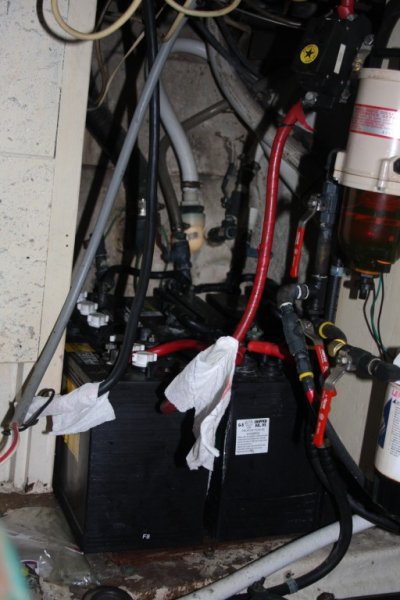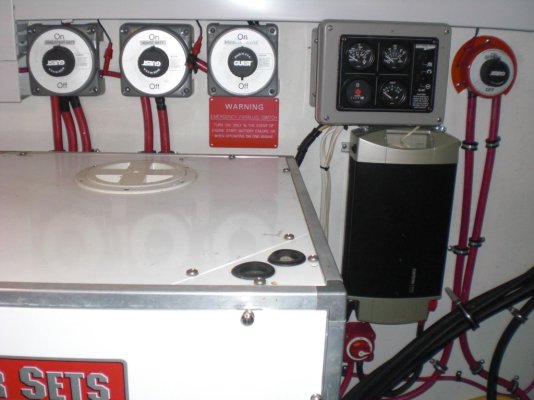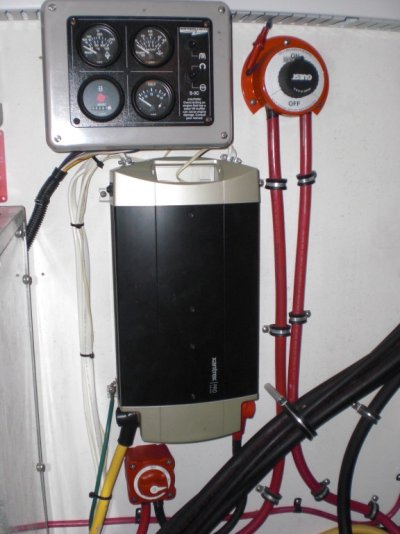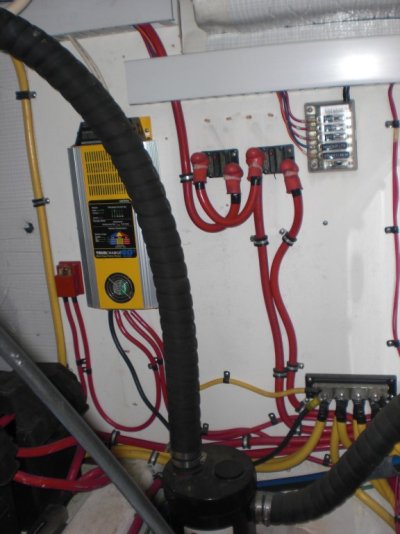7tiger7
Senior Member
- Joined
- Jan 16, 2011
- Messages
- 239
Hi,
on the new Marine Trader 43 I bought - I am trying to understand how the PO set up his battery banks (I'd ask him, but he passed away).
From what I see, he has 3 battery banks, as follows:
6 x GC-2
2 x GC-2
2 x 4D
(many of their cases have cracked from freezing).
From what I surmise:
6 x GC-2 - house bank?
2 x GC-2 - generator cranking?
2 x 4D - cranking for the 2 Volvos?
Also, she has a Heart Interface Freedom Mairne 25 inverter / charger with a "Link 2000" controller.
SO - any thoughts on which batteries would logically be cranking, which would be house?
And - advice on replacing the cracked batteries?
Thanks
Phillip
on the new Marine Trader 43 I bought - I am trying to understand how the PO set up his battery banks (I'd ask him, but he passed away).
From what I see, he has 3 battery banks, as follows:
6 x GC-2
2 x GC-2
2 x 4D
(many of their cases have cracked from freezing).
From what I surmise:
6 x GC-2 - house bank?
2 x GC-2 - generator cranking?
2 x 4D - cranking for the 2 Volvos?
Also, she has a Heart Interface Freedom Mairne 25 inverter / charger with a "Link 2000" controller.
SO - any thoughts on which batteries would logically be cranking, which would be house?
And - advice on replacing the cracked batteries?
Thanks
Phillip








